The Blue Heeler is one of the most popular herding dog originally developed in Australia. It’s also known as Australian cattle dog or cattle dog. This is medium size dog that comes in different colors like blue, blue mottled, blue speckled, red mottled, red speckled. This dog comes in mottled red color, so it’s also known as Red Heeler. Blue-coloured dogs proved to be the most popular among ranch owners and drovers, and they became known as Blue Heelers.
Blue Heeler content overview
- History
- Different names
- Appearance and Characteristics
- Personality and Temperament
- Health & problems
- How to take care
- Puppy Information
- Puppy price
- Things to consider adopting a puppy
- Advantages & Disadvantages
- Photo gallery
History of Blue Heeler
A crucial player in Australia’s beef industry development, the Australian cattle dog, is a unique dog with an interesting history stretching back to the mid-1800s. In 1893, Robert Kaleski took the reins and began breeding Blue Heelers. The early settlers in Australia brought with them both livestock and the dogs they used to work them.
This dog has a distinct appearance and highly capable herding skills that gained its notoriety across Australia. It was later imported to America and recognized by the American Kennel Club in 1980. An Australian Cattle Dog named Bluey lived from 1910 to 1939, giving it the Guinness World Record for the longest canine lifespan.
Origin: Australia
The first registered Australian Cattle Dogs to arrive in the United Kingdom were two blue puppies, Lenthal Flinton and Lenthal Darlot, followed in 1980 by Landmaster Darling Red in whelp.
Different Names & Types of Blue Heeler
All names
- ACD
- Australian Cattle Dog
- Cattle Dog
- Red Heeler
- Queensland Heeler
- Australischer Treibhund
- Australian Heeler
- Hall’s Heeler
Recognition
- American Kennel Club – AKC
- Australian National Kennel Club – AKNC
- Canadian Kennel Club – CKC
- American Canine Registry – ACR
- American Canine Association Inc – ACA
- Continental Kennel Club – CKC
- America’s Pet Registry, Inc – APRI
- Animal Research Foundation – ARF
- Federation Cynologique Internationale – FCI
- Dog Registry of America, Inc – DRA
- United Kennel Club – UKC
- National Kennel Club – NKC
- Kennel Club of Great Britain – KCGB
- North American Purebred Registry, Inc – NAPR
- New Zealand Kennel Club – NZKC
Appearance & Characteristics
Australian Blue Heeler Appearance
The Australian Blue Heeler is a sturdy, muscular, compact dog that gives the impression of agility and strength. They have alert ears that stand up straight and a keen expression. These dogs must be well-conditioned and should never look delicate or cumbersome. The Blue Heeler is born white, and their coloration becomes apparent as they grow, although any solid color on the face or body is present at birth.
Blue Heeler Breed Basic Characteristics
| Origin | Australia |
| Size: | Medium |
| Lifespan: | 13 to 15 years |
| Trainability: | Easy Training |
| Exercise Needs: | An hour or more a day |
| Grooming: | Easy maintenance, brushes, and baths |
| Barking: | Barks When Necessary |
| Shedding: | Moderate |
| Protective Ability: | Good for loving and protective |
| Brushing: | Daily |
| Touchiness: | Fairly sensitive |
| Hypoallergenic Breed: | No |
| Space Requirements: | House with Yard |
| Compatibility With Other Pets: | Good |
| Average Puppy Price: | Average $500 – $700 USD |
| Litter Size | 1 to 7 puppies, average 5 |
| Height | Male: 17 to 20 inches (43-51 cm) Female: 17 to 19 inches (43-48 cm) |
| Weight | 30 to 62 pounds (13-28 kg)Sound |
Behavior
The Red heeler Dog thrives on change and new experiences, and many handlers find training the breed challenging for this reason. A Blue heeler Dog can excel in obedience competition.
Size, Proportion, Substance
- Size: The Blue Heeler (Australian Cattle Dog) weighs approximately 30 to 62 pounds; males are 17 to 20 inches in height, while females are 17 to 19 inches.
- Proportion:
- Substance:
Head
The head is strong and must balance other proportions of the dog and keep with its general conformation.
- Skull: The broad skull is slightly curved between the ears, flattening to a slight but definite stop.
- Muzzle: Powerful muzzle with the skull and muzzle on parallel planes.
- Eyes: The eyes should be an oval shape and medium size, neither prominent nor sunken and must express alertness and intelligence.
- Ears: Short and pricked, running to a point at tip: thick, and set wide apart on the skull, with plenty of muscle at the butts. Should be as decidedly pricked as a cat’s.
- Teeth: The teeth, sound, strong and evenly spaced, gripping with a scissor-bite, the lower incisors close behind and just touching the upper.
- Chest: Deep, but not out of proportion to the body.
- Legs: Clean, and fair amount of bone, great muscular development
- Feet: Small and cat shaped.
Neck, Topline, Body
- Neck: The neck is extremely strong, muscular, and of medium length broadening to blend into the body and free from throatiness
- Topline: The topline is level, back strong with ribs well sprung and carried well back not barrel ribbed.
- Body: The length of the body from the point of the breastbone, in a straight line to the buttocks, is greater than the height at the withers, as 10 is to 9.
Forequarters
- Shoulders: The shoulders are strong, sloping, muscular and well angulated to the upper arm and should not be too closely set at the point of the withers.
- Forelegs: The forelegs have strong, round bone, extending to the feet and should be straight and parallel when viewed from the front, but the patterns should show flexibility with a slight angle to the forearm when viewed from the side.
- Feet: The feet should be round and the toes short, strong, well arched and held close together. The pads are hard and deep, and the nails must be short and strong.
Hindquarters
The hindquarters are broad, strong and muscular. The group is rather long and sloping, thighs long, broad and well developed, the stifles well turned, and the hocks strong, and well let down.
- Rear Legs:
- Hind feet: The feet should be round and the toes, short, strong, well arched and held close together. The pads are hard and deep, and the nails must be short and strong.
- Tail: The set on of the tail is moderately low, following the contours of the sloping croup and of length to reach approximately to the hock.
Coat
The coat is smooth, a double coat with a short, dense undercoat. The outer coat is close, each hair straight, hard and lying flat so that it is rain-resisting.
Winter Coat:
Summer Coat:
Shedding:
Color and Markings
The color should be blue, blue mottled or blue speckled with or without other markings. The permissible markings are black, blue or tan markings on the head, evenly distributed for preference.
Coat Color and Markings
The Blue heeler Dog’s coloring is blue or red speckle. Blue or blue-mottled includes black, blue, or tan markings on the head; partially tan on the forelegs, chest, and throat; and tan on the jaw and hind legs.
Gait: Gait in itself is no soundness but a measure of soundness. Proper gait is not possible without proper structure.
Blue Heeler Personality
The Australian Cattle Dog is such a high-energy dog that it needs constant mental and physical activity. They are very strong, loyal, and intelligent, capable of learning complex tasks after only a few repetitions. The blue heeler is protective of what he considers his territory, and he’ll defend it. He’s also reserved with strangers. But he’s devoted to his owner and family. Australian Cattle Dogs love children, but there is a caveat: Some will nip at the heels of children to herd them.
Blue Heeler Temperament
The Australian Cattle Dog is a naturally loyal, intelligent, hard-working and protective breed. Temperament is affected by several factors, including heredity, training, and socialization. Blue heeler puppies with nice temperaments are curious and playful, willing to approach people. Blue heeler has strong herding and guarding instincts. The blue heeler forms strong bonds with his family and is protective and affectionate.
Blue Heeler Training & Activity
Activity Requirements
The Blue heeler demands a high level of physical activity. Like many other herding dog breeds, this has an active and fertile mind, and if it is not given jobs to do, it will find its activities. This was developed to encourage reluctant cattle to travel long distances and maybe the best breed in the world for this work.
Behavioral Traits
Blue heeler tends to be suspicious and watchful of strangers. This also nips the animals they’re herding, again due to instinct. They’re not trying to be mean. A properly trained and socialized blue heeler is an excellent family dog. He is agile and tireless, loves to run and play with children and is an affectionate, fun-loving companion.
Trainability
The Blue heeler Dog is an extremely intelligent, active, and sturdy dog breed. It is willing and able to learn a wide variety of tricks and sports such as catch or Frisbee. This dog breed must be kept occupied with tasks and provided companionship, or they will become destructive and mischievous.
These dogs are capable of performing many different jobs with and for their human companions. The Blue heeler’s trainability, intelligence and problem-solving skills coupled with their medium-size-build, overall health and easy to care for coat make them a delightful companion.
Blue Heeler Feeding, Fitness & Health Problems
Feeding Plan
Blue heeler puppies, just like human babies, are growing rapidly. Their muscles, organs, and bones are forever taking shape, and as such, they need extra nutrients in other to fuel this rapid growth. It would help if you started your puppy on solid food by the 4th week of life.
The Blue Heeler requires a healthy diet to stay away from any kind of diseases.
- Blue Heeler pups between 8 and 12 weeks old need four meals in a day.
- 3 to 6 months old Pup Blue Heeler needs soft food, especially milk until 6 weeks.
- Blue Heeler puppy 3 times a day between 8 to 12 weeks.
- Feed puppies 6 months to 1 year two times every twenty-four hours.
- By the time your Australian Cattle Dog hits her first birthday, 1 meal every 24 hours is usually sufficient.
- Sometimes adult Australian Cattle Dog might eat 2 smaller servings.
Apart from giving them two and a half to three cups of dry dog food, Australian Cattle Dog can also be given a fish diet to help retain the oil in their skin. A special liquid diet is needed for those without middle teeth.
Health
The Blue heeler is one of the dog breeds affected by progressive retinal atrophy. It has the most common form, progressive rod-cone degeneration (PRCD), a condition that causes the rods and cones in the eye’s retina to deteriorate later in life, resulting in blindness.
Health Problems
Blue Heeler breeds are generally healthy, but they’re prone to certain health conditions like all breeds. Not all
blue heeler dogs will get any or all of these diseases, but it’s important to be aware of them if you’re considering this breed. There is genetic deafness in the breed. Some other health problem is below.
Hip Dysplasia: This is an inherited condition in which the thighbone doesn’t fit snugly into the hip joint. Some
dogs show pain and lameness on one or both rear legs, but others don’t display outward signs of discomfort.
Obesity: Obesity can be a significant health problem in Australian Cattle Dogs. It is a serious disease that may cause or worsen joint problems, metabolic and digestive disorders, back pain and heart disease.
Thyroid Problems: Cattle Dogs are prone to a common condition called hypothyroidism, in which the body doesn’t make enough thyroid hormone. Signs can include dry skin and coat, hair loss, susceptibility to other skin diseases, weight gain, fearfulness, aggression, or other behavioural changes.
Living Conditions
Blue heeler can live in a secure shelter outdoors, but they also do well inside the house with the family. They are unsuitable for living an apartment life or living in an environment that restricts their movement.
How to Care Blue Heeler?
Daily Exercise
Exercise, training, socialization, and a job are important aspects of this breed’s quality of life. When the Blue heeler has something to do, many behavioral issues can be avoided. This dog requires lots of daily exercises and mental stimulation to keep him busy. However, with proper exercise, training, and stimulating work, this breed can make a wonderful companion that is quite long-lived.
Grooming & Bruising
An Australian Cattle Dog’s smooth double coat is odourless and can be red or blue. They shed their dense undercoats seasonally and require occasional grooming — plan for weekly brushings and baths as needed. Check those prick ears frequently for wax buildup and debris, which can cause infections.
Brush your Australian Cattle Dog’s teeth at least two or three times a week to remove tartar buildup and the
bacteria that lurk inside it. Daily brushing is even better if you want to prevent gum disease and bad breath.
Use equipment for best grooming
Grooming requires a lot of expertise as well as a wide range of equipment. Here is a list of best grooming equipment for Blue heeler.
Ceenwes grooming kit
Here is a best and perfect Grooming kit for your ACD.
These dog grooming clippers also come with 11 tools: 1 × Pet clipper 1 × AC Power Adapter,1 × Cleaning Brush,4 × Comb Attachments 1 × Stainless Steel Scissor,1 ×Stainless teeth scissor,1 × Stainless Steel Comb,1 × Nail Clipper Kit,1 × Nail File,1 × Oil.
Grooming Table
One of the most critical items for groomers is their table. On this day, there are many tables available in the market like Electric Grooming Tables, Hydraulic Grooming Tables, Portable Grooming Tables so that you can choose any for your lovely dog. Find the best grooming table for an Australian cattle dog.
Grooming Glove
The five fingers Deshedding Gloves do well in removing & trapping loose furry pet hair, minimizing the flying fur in your house and keeping your house clean and pets healthy. Pet Gloves are made of skin-friendly materials, and the surface is soft silicone, which can give you love to pet a comfortable massage and not hurt the skin. The back is made of durable and breathable mesh that it’s very comfortable to use the glove. The Glove is the best grooming equipment for any dogs or pet. Buy Now Glove for a low price
Dental Health check-up
Many diseases and health conditions are genetic, meaning they are related to your pet’s breed. Dental disease is the most common chronic problem in pets, affecting 80% of all dogs by age two. And unfortunately, Blue heeler is more likely than other dogs to have problems with its teeth. Typically, Blue heeler lives between 13-15 years. Though these puppies are typically healthy, usually genetic ailments might focus on the teeth. They need to be better-known to change states missing many teeth or losing them shortly thenceforth, inflicting them to want a special diet. Brushing your pet’s teeth every week can assist you to notice changes in their mouths.
Love & affection
Love and affection are useful for every dog. If you give love and affection to your Blue heeler, then the dog will love you back. Your blue heeler puppy will be a member of your family, So Give lots of love and affection to your cute puppy. Most importantly, spend time with your dog because that your dog needs love and affection.
DNA Testing
DNA analysis is a rapidly growing field of healthcare for people and pets. Your pet’s DNA test needs to be done because this is an important step in caring for your pet. After all, it’s always better to know your pal is at risk for genetic disease before the problem is Untreatable.
Healthy Foods for Blue Heeler
Feeding a healthy meal in the dog’s life is the most important. On this day, many healthy foods are available on the market so that you can choose the best healthy foods for your dog. Healthy food is the most important for dog health care. The young Blue heeler, in general, is not a hearty eater as most breeds his size. He must often encourage meat juices or bacon grease mix in the food to entice him to eat.
It’s your responsibility and duty to choose the best foods for your pet.
Foods To Avoid
- Grapes
- Onions
- Raisins
- Nuts
- Chocolate
- Horse poo.
It’s poison for your dog. And for your cat, too
Blue Heeler Puppy Information
Blue heeler puppies are born white but very soon develop their blue mottle or red speckle, and usually, the color of their pads indicates their future coloring. They have drop ears as babies; these become erect at any age up to 6 or 7 months. Young Blue heeler puppies need to be taught not to nip inappropriately. Some bite inhibition is learned from littermates, so puppies need to remain in their litter until they are at least 7-8 weeks old.
Puppy Training
Blue heeler puppies cute. If you don’t know much about these puppies, we’d suggest learning more simply because they are so sweet. Training a Blue Heeler is almost the same job as training any other dog. Just that, you’ll need to channel his enormous energy and wilfulness, might take some more time to puzzle out who is training whom.
Best Training Tools
Dog collars and collars with remote
Dog collars and collars with remote is the best and very useful tool for Cattle dog training. This remote shock collar is built with the beginner in mind, helping them reinforce basic dog obedience around the house, the yard or walking in the park, and with a 330-yard range, training in these environments shouldn’t be a problem. If you are looking best collars with a remote Click here
Clicker training for dogs
The Clicker can train the dog and the cat, bird, chicken, sheep, and even mouse. A brand new happy communication mode with the pet. Great for training puppies and young adult dogs! Click here to find the best Clicker for Australian dog.
Pads for Dogs
Pads are one of the best and most useful tools for every dog. In this day there are many different Pads are available in market so you can find easily Click here to best Pads for CSW
Dog Bells for door
Whistle for dogs
Crate Training
Crate training can also help teach desired behavior, reduce separation anxiety, So fill the crate with comfortable bedding and a few toys.
Crate coaching a puppy will take days or weeks, counting on your Blue heeler age, temperament, disposition to be told. This coaching a puppy from a puppy mill will be tough, as puppies from mills have already learned.
Crate training is one of the most important things you can do for your new dog. It serves many purposes. Crates should be large enough for the adult dog to stand, sit and stretch out.
Crate training is a very challenging part of owning a puppy, but this dog is very intelligent, and a few training sessions should do the trick of getting your dog house trained.
Behavioral training
Behavioral training is very important for any dog. At some point in time all of us, dog owners, need to administer some dog behavior training. Behavioral training is very helpful for taking care of the dog. First of all, if you want to train your puppy to Behavioral training, find out some common behavioral issues like breaking, aggression, food guarding, howling, mouthing and chewing, separation anxiety, etc. and stop these behavioral issues and train your dog easily.
Obedience training
Blue Heelers are intelligent and perform very well in obedience rings and agility classes. Blue heelers are quick learners, so housebreaking need not be a struggle if you know effective training.
Socialization
The blue heeler is fiercely loyal and thus naturally protective of his family and a little wary of strangers. Early socialization such as participation in puppy kindergarten classes, playing at the dog park and interacting with other pets and their owners is essential.
Blue Heeler Puppy Price
If you are interested in adding a Blue heeler dog to your family, please consider adopting. According to the American Society for the Prevention of Cruelty to Animals (ASPCA), approximately 3.9 million dogs enter animal shelters each year.
Average puppy price: $500 – $700 USD
Blue Heeler Puppies for Sale
If you decide that the Bule heeler pup is the right choice for your family, you have two choices on how to get one. Finding the right Blue heeler puppy can be dog gone hard work, but PuppyFind provides a convenient and efficient means of selecting and purchasing the perfect Australian cattle dog puppy from the comfort of your home, and PuppyFinder.com are a source for finding an ideal Blue heeler Puppy for Sale or Blue heeler for Adoption.
Find a breeder
Blue heeler dog breeders can be found on the internet or locally. Prices range from approximately $150 for an adult, $300-$750 for a puppy of pet quality and $1200+ for a puppy of show or breeding quality.
Things to consider adopting a Blue heeler
If you consider a Blue heeler Dog, make sure you can provide him with a proper outlet for his natural energy and bright mind.
The Australian Cattle Dog needs early socialization and training. Like any dog, he can become timid if he’s not properly socialized when young.
If you’re seriously considering adopting a Blue Heeler, you should know.
- Blue heeler dog value more highly to be terribly near their family and like to be unbroken inside thanks to the weather.
- Before you adopt a Blue heeler, consider how much time your new family member will spend alone. Remember, a puppy requires constant attention.
- Blue heeler puppies are super cute, but put; puppies can be adorable, relentless machines of destruction.
- Before you adopt a puppy, ask yourself if you can walk your dog several times throughout the day.
- You also have the advantage of knowing that your dog is physically able to “hold it” for several hours at a stretch.
- Ask anybody who has adopted an adult dog then adopts an adult dog.
- If you’re unsure whether the new dog you’ve chosen is right for your family and lifestyle, consider fostering before committing.
Advantages of Blue heeler
- Easy to train
- Extremely active, physically and mentally
- Low grooming maintenance
- Typically a healthy and robust breed
- Protective of children
Disadvantages of Blue heeler
- Aggression toward other animals
- Habitual biting as a result of their herding instinct
- Requires training from an early age
- Heavy shedding
- Prone to nipping
- Require a large amount of exercise
Blue Heeler Images
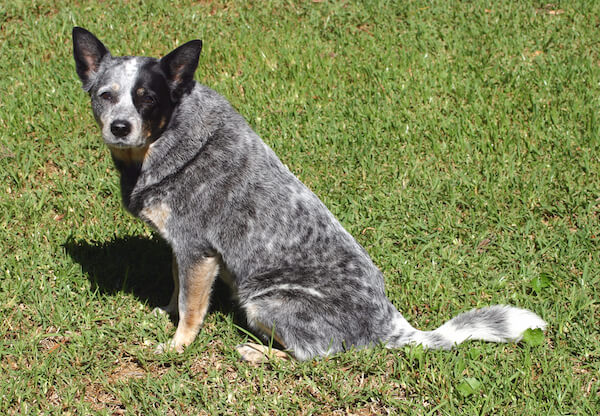
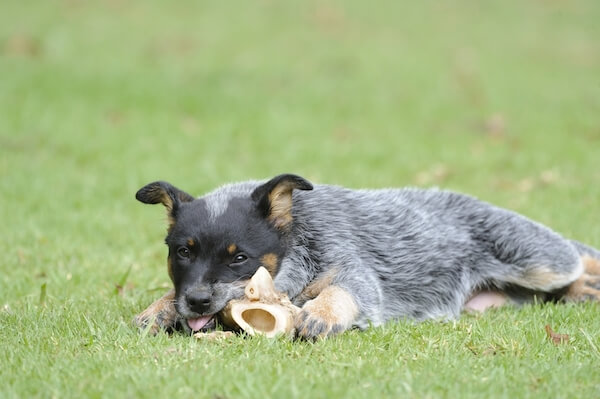
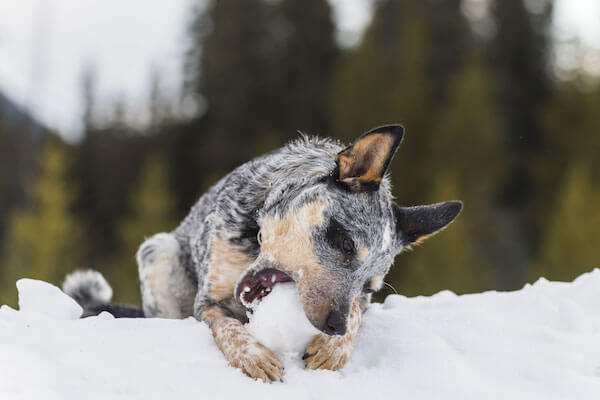
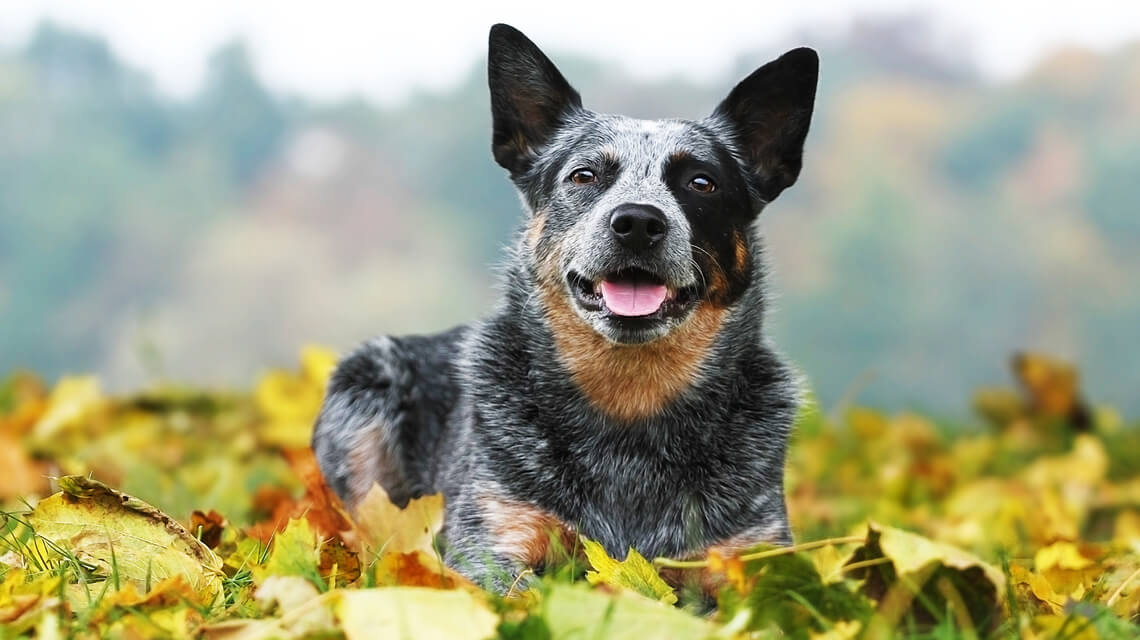
Finally, if you’d like to share, we may be able to include your very own Blue Heeler photos on this page. And don’t forget to tell us your dog’s name and how old he or she is!
You can also post your Blue Heeler pictures up on our Facebook page @Dogmal
Got some questions? Or some suggestions? That’s why we’ve got a comments section on this blog! You can feel free to leave a comment or two down, below and we’ll get back to you as soon as possible!
We love reading your messages……
Also read: Top 10 benefits of having a Beagle
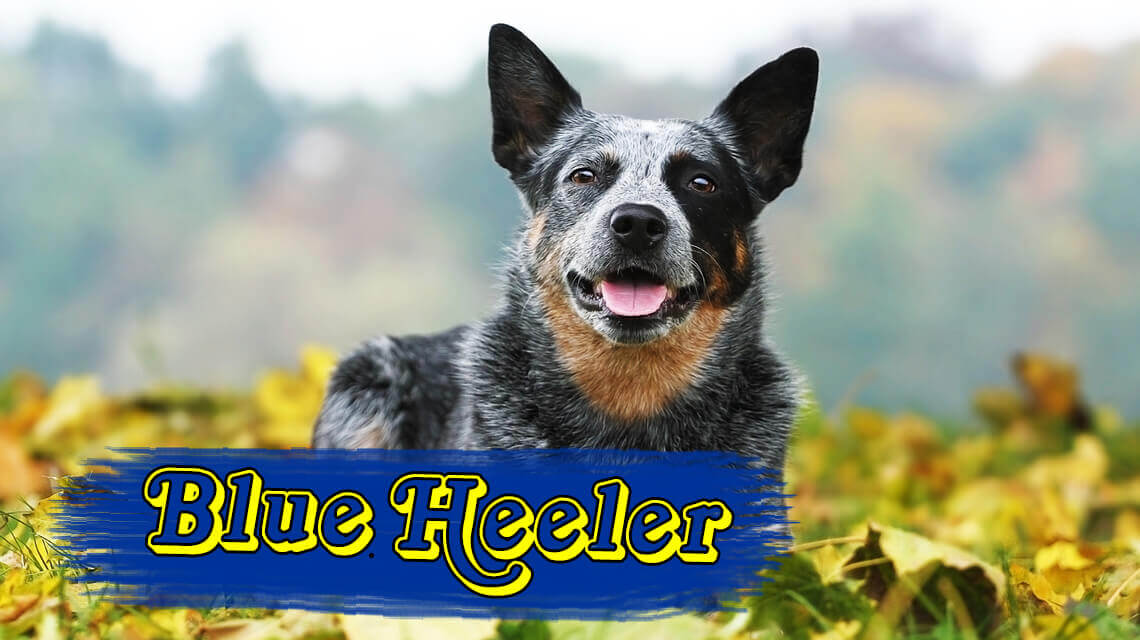
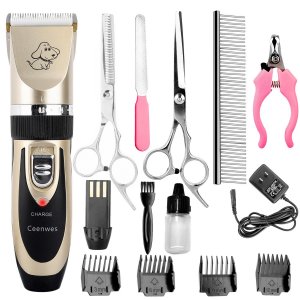
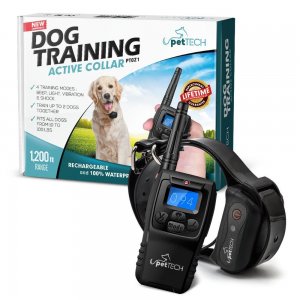
THIS IS THE BEST BLUE HEELER EVER!!!!!!!!!